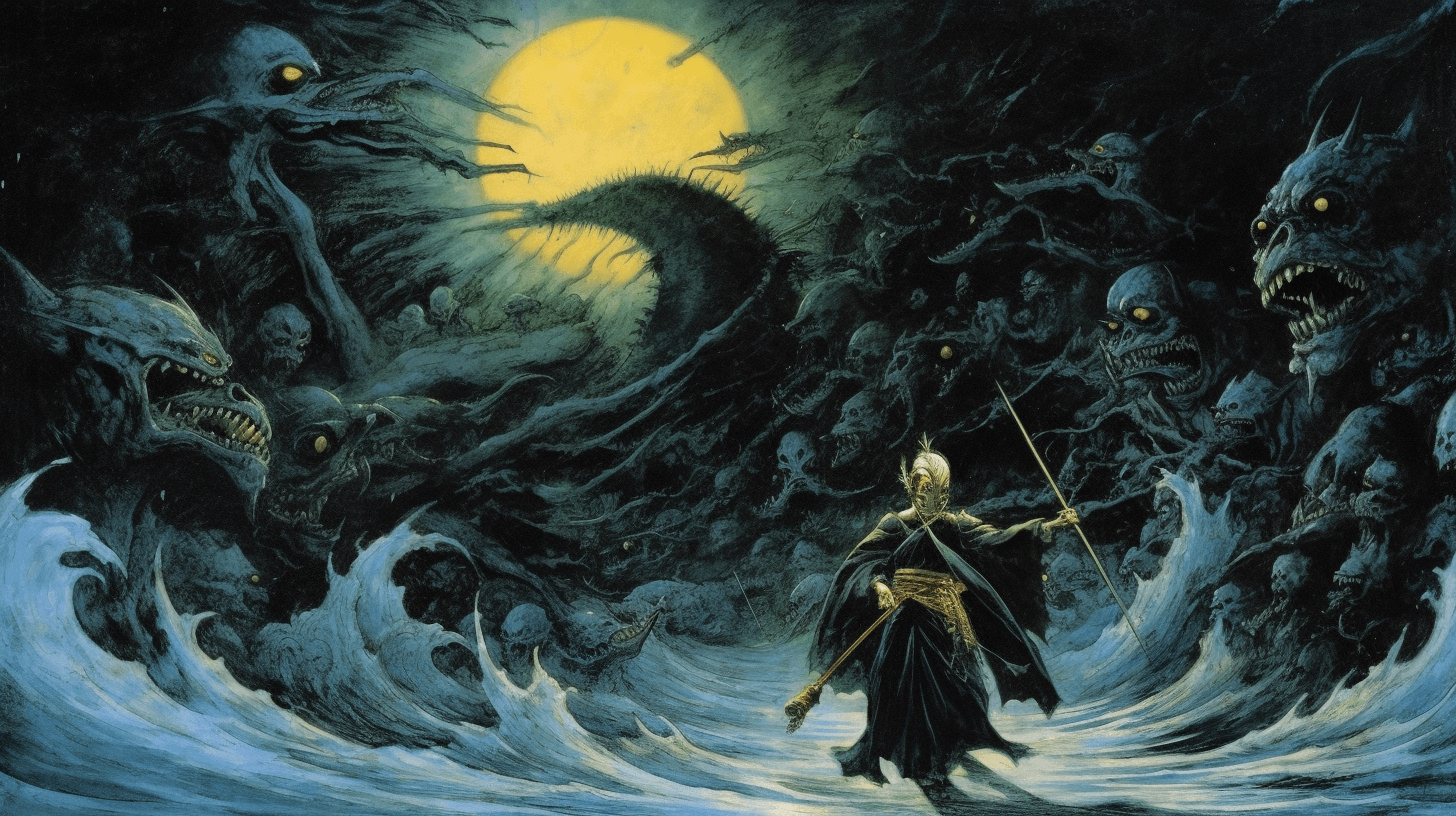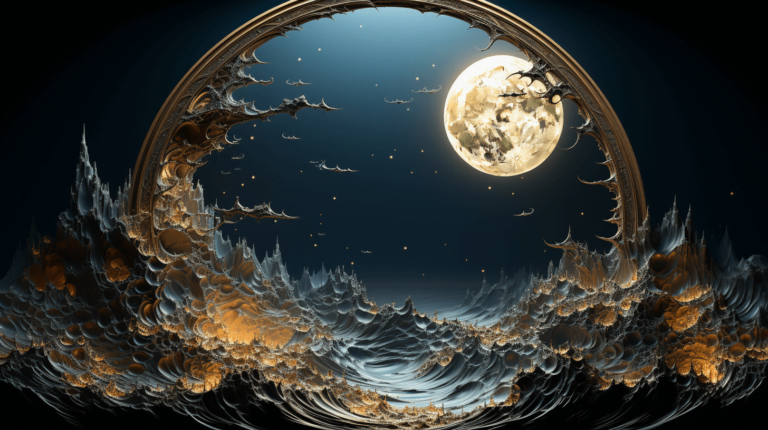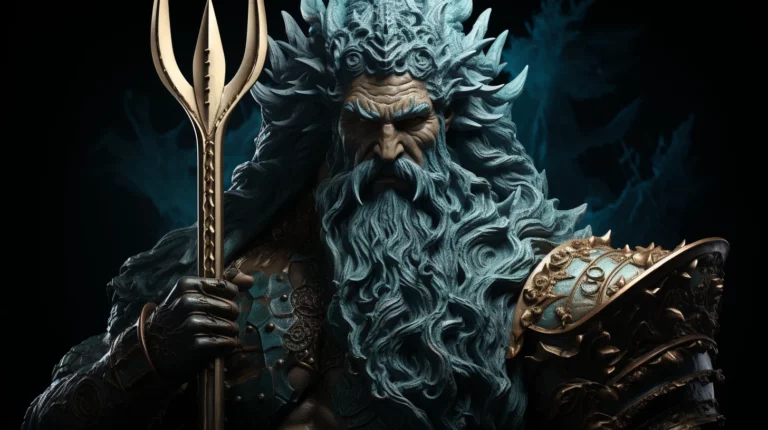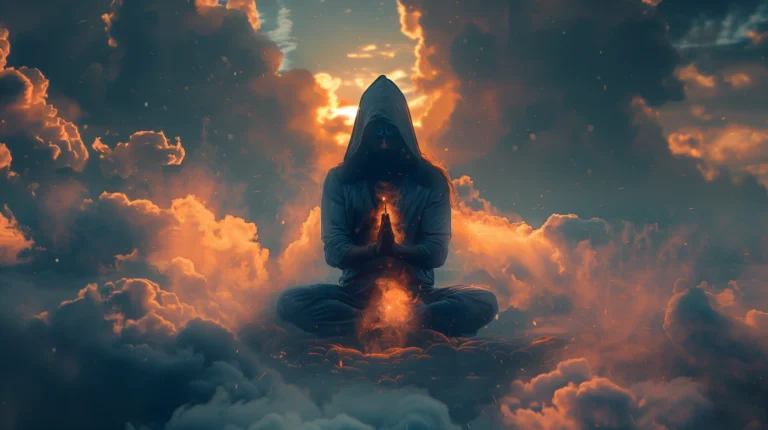Izanagi and Izanami
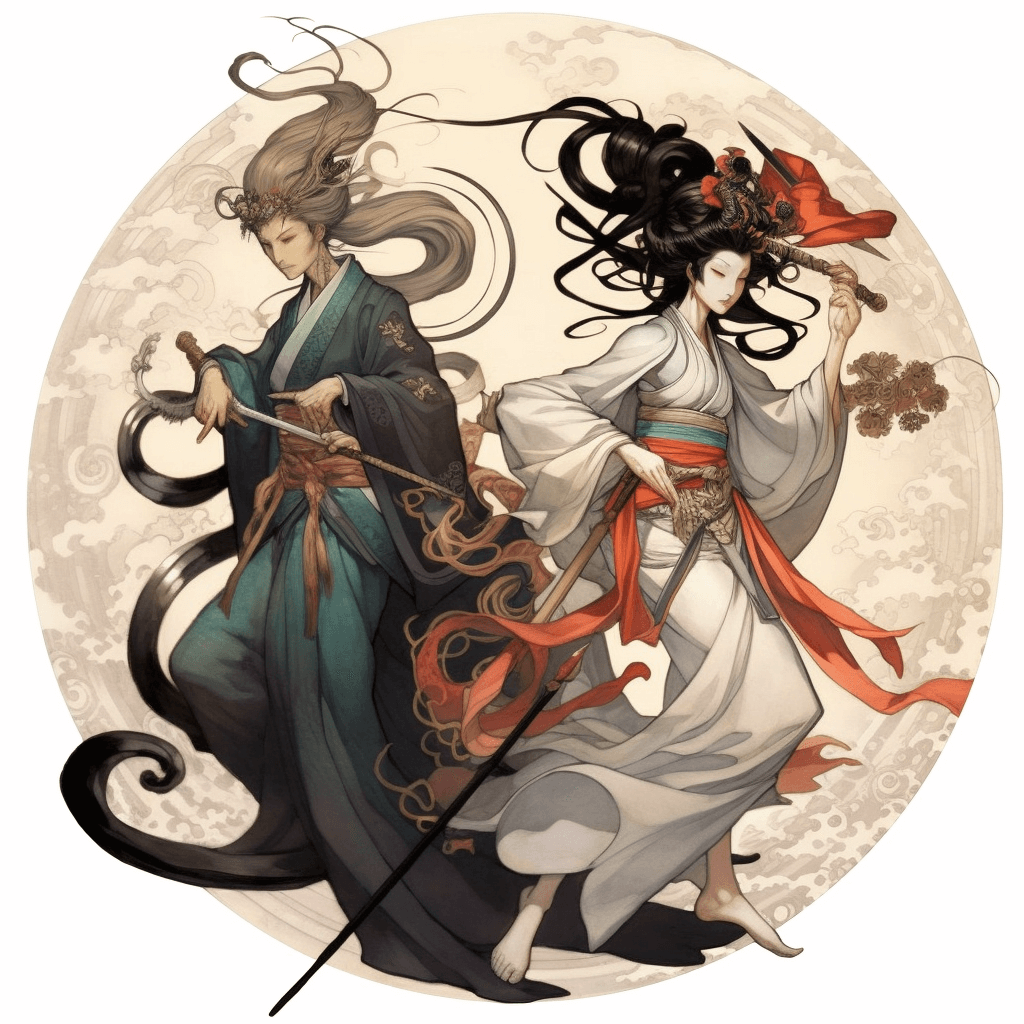
Izanagi and Izanami are two deities (kami) central to Japanese mythology and they play a crucial role in the Shinto creation myth. According to the Kojiki (“Records of Ancient Matters”), the oldest extant chronicle in Japan dating from the early 8th century, Izanagi and Izanami were tasked with creating the islands of Japan.
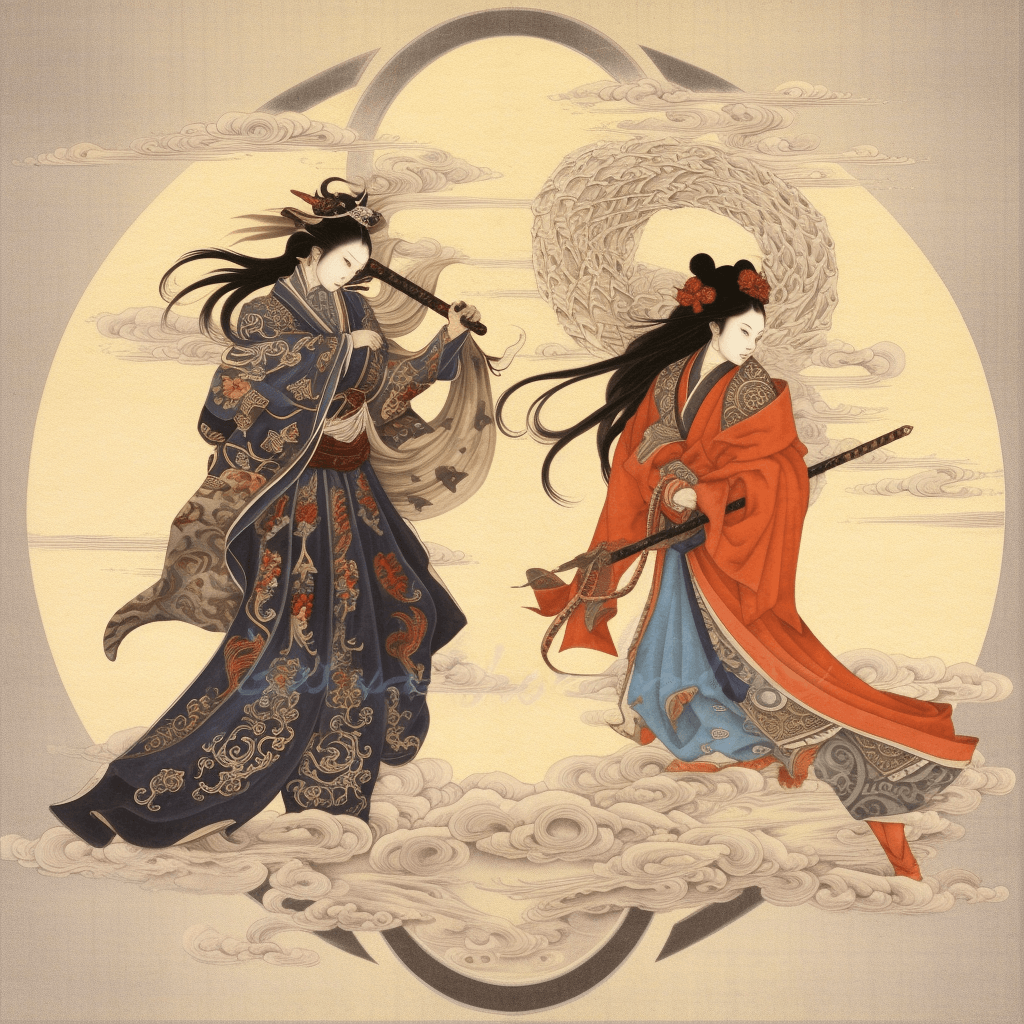
In the story, the two deities stand on the heavenly floating bridge, Ama-no-ukihashi, and stir the ocean with a heavenly jeweled spear. As drops fall back into the water, they coalesce and form the first island of Japan, Onogoro-shima. The two deities then descend to the island and construct a palace with a large central pillar. They walk around this pillar in opposite directions as part of a marriage ritual, and when they meet, Izanami, the female deity, speaks first. This exchange leads to an improper union, resulting in malformed offspring who are set adrift in reed boats.
The deities consult other gods, who tell them the ritual was done incorrectly. Izanagi should have spoken first because he is the male. The deities repeat the ritual, this time correctly, and give birth to the islands of Japan and various deities.
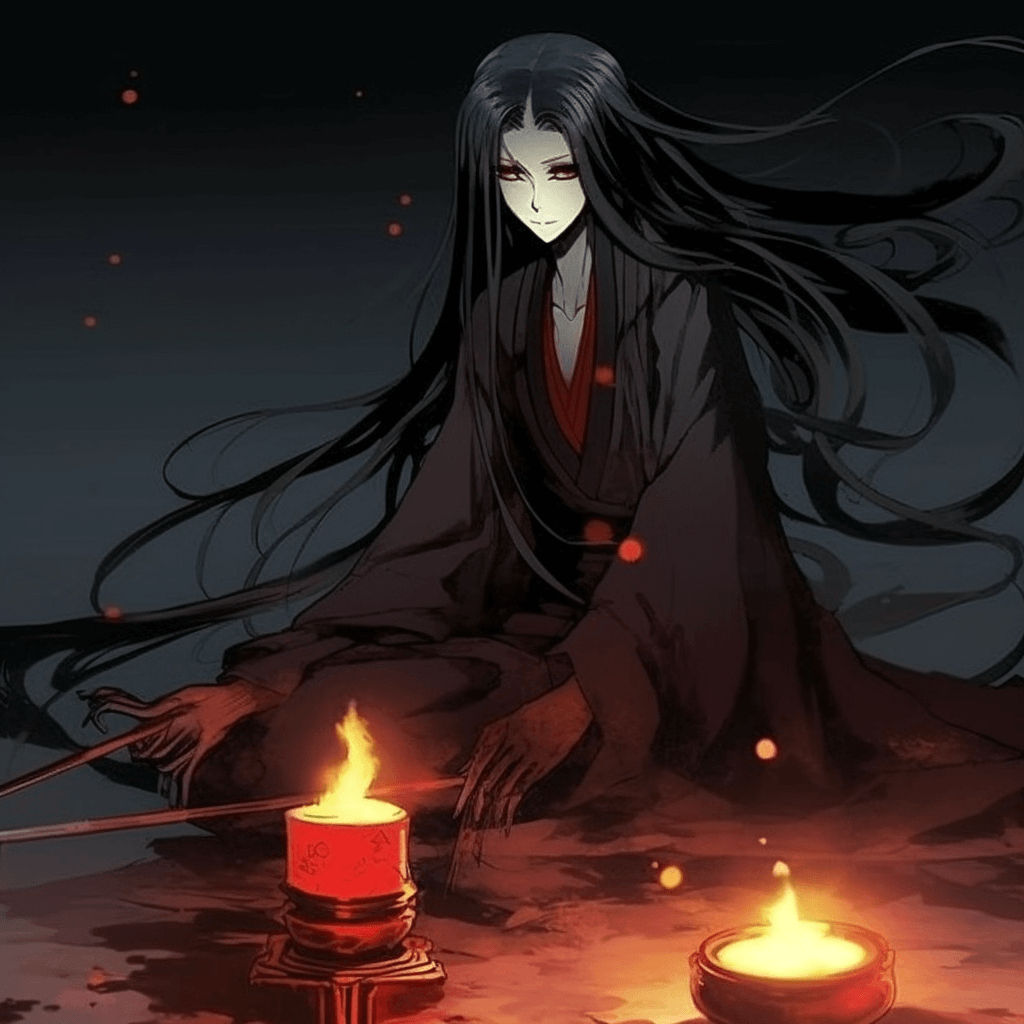
However, during the birth of Kagutsuchi, the fire deity, Izanami is fatally burned. Grief-stricken and furious, Izanagi kills Kagutsuchi, and from his blood and body, new deities spring forth.
After Izanami’s death, she goes to the underworld, known as Yomi-no-Kuni, the Land of the Yellow Springs (or the Land of Darkness). Izanagi is overcome with longing for Izanami, and he decides to journey to the underworld to retrieve her.
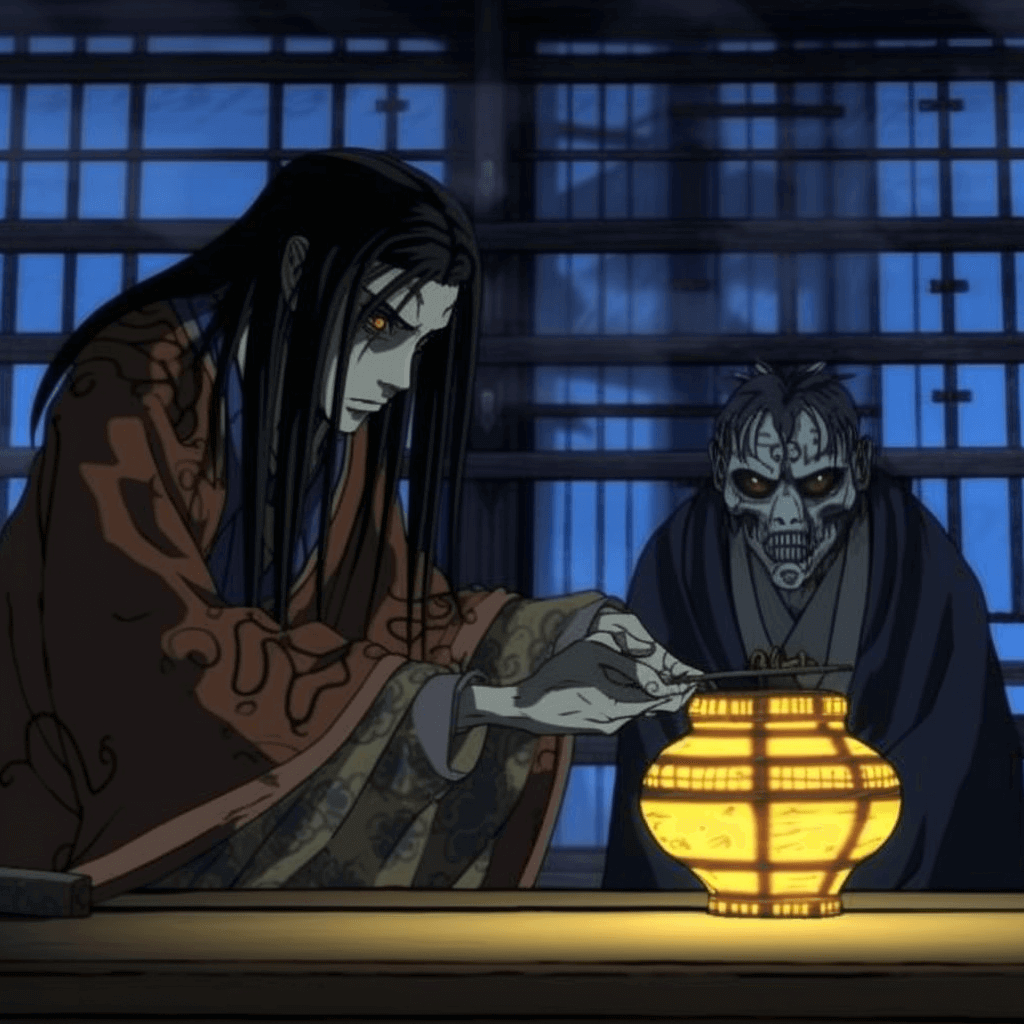
However, Izanami has already eaten the food of the underworld and can’t return to the living. She agrees to negotiate her release with the gods of the underworld but asks Izanagi not to look at her in the meantime. Unable to resist his curiosity, Izanagi lights a torch and looks upon Izanami, only to discover she has decayed and is now a being of rot and maggots.
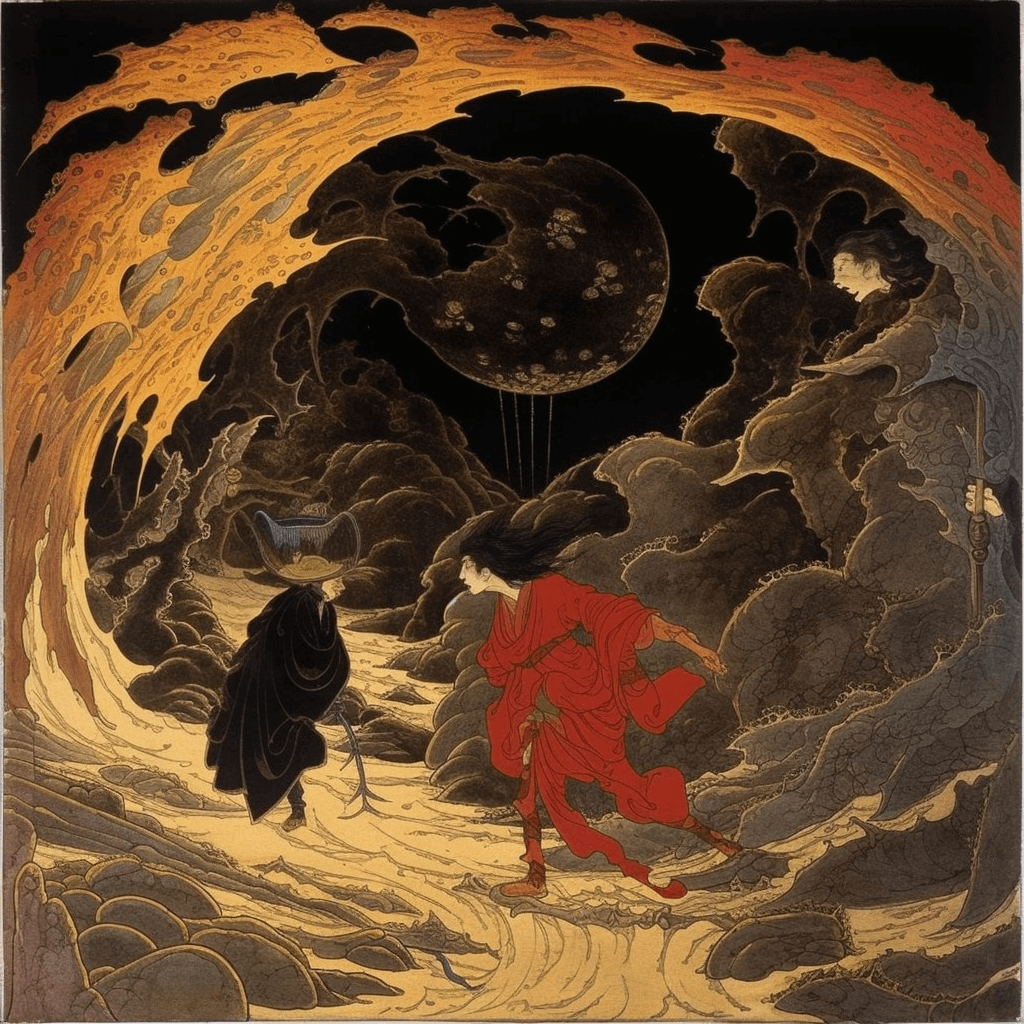
Horrified, Izanagi flees, pursued by Izanami and shikome, monstrous women of the underworld. He blocks the entrance to the underworld with a massive boulder, thus permanently separating the world of the living from the world of the dead.
Izanagi then purifies himself in a river to cleanse the pollution of the underworld. As he washes, new gods are born from his discarded clothing and from the various parts of his body. Most notably, as he cleans his left eye, Amaterasu, the sun goddess, is born. From his right eye comes Tsukuyomi, the moon god, and from his nose comes Susanoo, the storm god.
The story of Izanagi and Izanami is an allegory for various aspects of life, including birth, death, and the cycles of nature. It also serves as a cosmogonic myth, explaining the origin of the islands of Japan and many of the Shinto gods.
Lessons from Izanagi and Izanami Myth
There are many lessons that can be learned from the story of Izanagi and Izanami. Here are some of the key takeaways:
The Importance of Rituals and Correct Order: When Izanami spoke before Izanagi during their marriage ritual, it resulted in an improper union and the birth of malformed children. This underlines the importance of rituals and traditions, and also indicates the cultural value placed on correct order and hierarchy in traditional Japanese society.
The Cycle of Life and Death: The deaths of Izanami and Kagutsuchi, followed by the birth of new deities from Izanagi’s purification process, exemplify the cycle of life and death. This can remind us that while death is part of life, it’s not necessarily an end, but can lead to new beginnings.
Consequences of Disobedience: Izanagi’s decision to look at Izanami in the underworld, despite her request, had serious consequences, resulting in a permanent separation between the worlds of the living and the dead. This demonstrates the importance of respecting the boundaries and wishes of others, as well as the consequences of disobedience.
Facing Grief and Loss: The story also conveys the pain and grief associated with the loss of a loved one. Izanagi’s journey to the underworld to retrieve Izanami shows the lengths to which grief can drive us. But in the end, Izanagi has to accept Izanami’s death and move on, symbolizing the acceptance stage of grief.
Purification and Renewal: The act of Izanagi washing himself to cleanse the impurity of the underworld and the birth of new deities from this act symbolizes purification and renewal. It reminds us that we too can purify ourselves from past mistakes or traumas and start afresh.
Respect for Nature and the Natural Order: The births of the sun, moon, and storm gods from Izanagi, along with the creation of the islands of Japan and other deities from his union with Izanami, symbolize the creation and harmony of nature and the universe. This shows respect for nature and the natural order of things.
These lessons from the myth of Izanagi and Izanami are deeply ingrained in Japanese culture and are reflected in various aspects of Japanese society, including the emphasis on respect, harmony, and the natural order of things.

